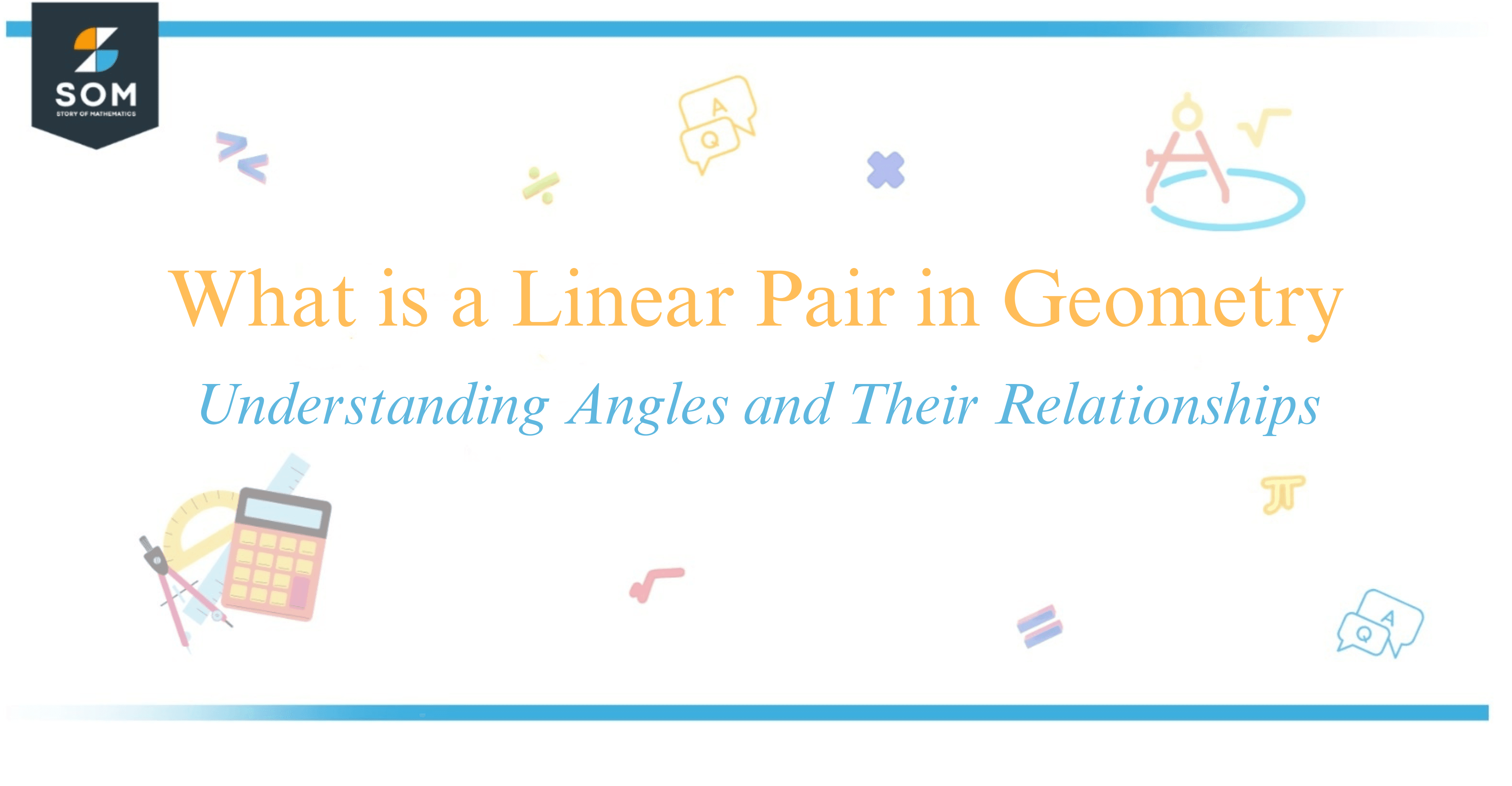
In geometry, a linear pair is a concept involving two adjacent angles that share a common arm and whose non-common arms form a straight line.
To be considered a linear pair, these two angles must add up to $180^\circ$, which means they are supplementary angles.
This is a fundamental concept, as it is closely related to the properties of lines and angles that form the basis for much more complex geometric reasoning. Understanding a linear pair is crucial for grasping how various angles interact within different geometric shapes and designs.
As I explore this topic, I will also discuss how the definition of a linear pair helps us find unknown angles and solve problems involving parallel lines cut by a transversal.
When we see two angles that make a linear pair, we can confidently say their measures sum up to a straight angle, which is essentially a straight line. Let’s dive into the fascinating world of angles and discover why linear pairs are so important in geometry.
What are Linear Pairs in Geometry?
In geometry, I often encounter the concept of linear pairs of angles.

These pairs consist of two adjacent angles that have a common vertex and a common arm, while their non-common arms are straight lines on opposite sides. It’s key to know that these angles are also known as supplementary angles because they always add up to a straight angle, which is exactly 180°.
Interestingly, axioms related to linear pairs state that if two angles form a linear pair, then they are supplementary.
This is what’s called the linear pair postulate or sometimes the linear pair axiom. So, whenever I see two angles that share a vertex and a side, and their other sides form a straight line, I can confidently say they form a linear pair.
Here is an illustration of what I mean by linear pairs:
| Angle | Relation | Description |
|---|---|---|
| Angle A | Adjacent to Angle B | Forms a linear pair with Angle B |
| Angle B | Adjacent to Angle A | Forms a linear pair with Angle A |
| Sum | Supplementary | $\sum$ (Angle A + Angle B) = 180° |
As an example, suppose that $\angle ABC$ and $\angle CBD$ form a linear pair. This means $\angle ABC + \angle CBD = 180°$. The inference I can draw from this is simple: if I know one of the angles, I can effortlessly find the other by subtracting the known angle from 180°.
To sum it up, linear pairs are a foundational concept in understanding how angles interact when lines intersect, and knowing about them gives me a better grasp of geometric principles.
Exploring Linear Pair Examples
When I explore geometry, I often encounter a concept known as the linear pair. Essentially, a linear pair consists of a duo of adjacent angles formed when two lines intersect.
These angles share a common vertex and a common ray, while their non-adjacent line segments span out to form a straight line.
For instance, let’s consider two rays, $\overrightarrow{BA}$ and $\overrightarrow{BC}$, emanating from a single point ( B ) and stretching infinitely in opposite directions.
Now, if a third ray $ \overrightarrow{BD}$ bisects the straight angle created by $ \overrightarrow{BA} $ and $\overrightarrow{BC}$, the angles $\angle ABD $ and $\angle DBC$ illustrate a linear pair.
Table: Linear Pair Properties
| Property | Description |
|---|---|
| Adjacency | Each angle shares a common side |
| Non-adjacency | The non-common sides form a straight line |
| Supplementary | Both angles’ measures add up to $180^{\circ}$ |
It’s crucial to practice identifying and understanding linear pairs. They serve as fundamental components in solving various geometric problems, especially when dealing with types of angles or proving that certain angles are complementary or the vertical angles.
One way to solve for an unknown angle in a linear pair is by using the supplementary property, since if one angle measures ( x ) degrees, the other is ( 180^{\circ} – x ).
Moreover, a solid grasp of linear pairs facilitates recognizing patterns within geometric figures such as triangles and line segments, opening up a realm of practice problems to reinforce my understanding.
When I approach these examples, I not only strengthen my ability to solve for unknowns but also begin to see the interconnectedness of geometric principles, like how linear pairs relate to opposite rays and the broader topic of types of angles.
Conclusion
In geometry, the concept of a linear pair of angles is fundamental and contributes to my understanding of angular relationships.
A linear pair consists of two adjacent angles with their non-adjacent sides forming a straight line, which is mathematically expressed as $\overleftrightarrow{AD}$ in the given diagram.
This characteristic alignment stipulates that the angles are supplementary, meaning the sum of their measures is equal to $\boldsymbol{180^\circ}$, or $\angle ABC + \angle DBC = 180^\circ$.
The supremacy of the linear pair axiom is underscored by its wide applicability. For instance, it assists me in deducing unknown angle measures when provided with at least one angle of the pair.
Remembering that each angle is poised to complement the other up to $\boldsymbol{180^\circ}$ is handy in solving various geometric problems.
It’s also crucial for me to properly grasp that the converse of the linear pair axiom holds; when two angles are supplementary, it typically suggests they form a linear pair as long as they are adjacent and share a common vertex and side.
By appreciating these intricacies of linear pairs, my proficiency in geometry is significantly enhanced, and I’m equipped to tackle related problems with confidence.
